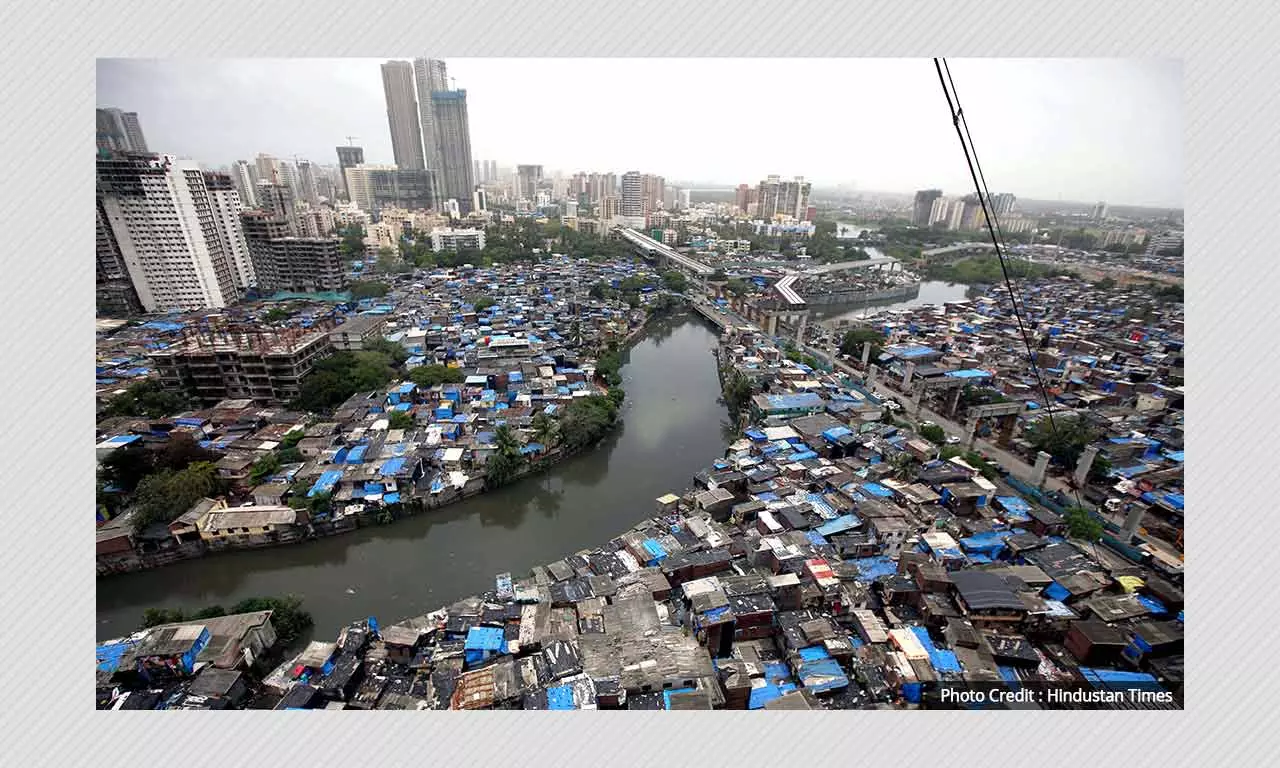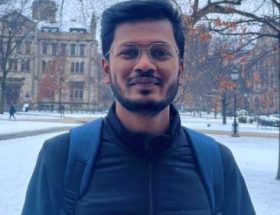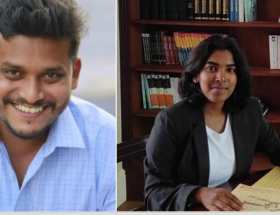Manoj Madame
The social and economic landscape of India has been profoundly altered by urbanization. Indian cities have experienced unprecedented urbanization over the past few decades, as millions of people have left rural areas in search of better opportunities. In cities and towns, new industries have developed, services have expanded, and employment opportunities have been created. However, urbanization has not had a uniform impact across all communities. Since Dalits-Bahujans have historically been marginalized and discriminated against, urbanization has presented numerous challenges to them. In many aspects of urban life, Dalits remain discriminated against and marginalized despite progress in some areas, such as education and employment.
In urban areas, Dalit-Bahujans face the challenge of finding affordable housing. Since cities have grown, housing prices have skyrocketed, causing many Dalits to find it difficult to find affordable housing. In response, many Dalit families have been forced to live in slums and informal settlements, where they are subjected to poor living conditions and lack access to basic amenities. Even in 21st-century India, Dalits remain segregated, and have unequal access to public goods such as tap water as a result of a recent study by Pranav Sidhwani of the Delhi-based Centre for Policy Research. In spite of Ambedkar’s hopes, urbanization has not been a strong equalizing force and social policies in India lack social justice value in terms of planning for urban development. In this article, I will show how the political elite class and elite bureaucrats set the urban policy for Dalit-Bahujan without acknowledging the issue of caste.

Image source – Hindustan Times
The rapid growth of urban areas in the city in India is a major challenge for urban planning in India. The new towns that are on the path of development enhance their boundary within the limited spaces they had with the existing urban area. The rural poor find some hope in migration to the towns. The attraction of urban towns for the rural poor is not because of the thrust of industrialisation but some imaginary hope for some openings in the cities. Thus urban poverty is an extension of the rural poverty in India and it is different from the classical development of urban centers which emerged with the growth of industrialisation and people migrated from farms to the factories (Ruben C. Bellan : The Evolving City). Most of the policies which were produced in India talk from the perspective of inclusion and sustainability but in the ground implementation, they all need to be improved. In India, public policies are often framed from the top and are seen as the enlightened perspective for people who are on the lower rungs of the social hierarchy. Caste is the basis of Indian society, which offers privileged and prestigious positions to people of the upper caste, whether they work for the government or non-government organizations. In other words, urban development is an outcome of policies framed by India’s elite.
Elite class framing policy for Dalit- Bahujan
Since Indian society is mostly caste and class-based, certain political elite classes dominate the development of policy and regulate the implementation process from the top. It is most problematic that the policy will affect the lives of people whose thoughts and ideas are never acknowledged by these people and maybe they are right to suppress local opinion. In 2019, the Union government revealed that out of 89 secretaries posted with it, only one belonged to the SC category, three belonged to the ST category, while none were from the OBC category. In India, public policies are often framed from the top and are seen as the enlightened perspective for people who are on the lower rungs of the social hierarchy. In such policy practices when we see the social justice idea as a constitutional part and must reflect through the welfare policy is mostly lacking in India. If we are discussing social justice, we must ensure the rights and living dignity of the poor, who are already at the bottom of society. The policies which were framed in India talks from the perspective of inclusion and sustainability but on the ground implementation, they all need to be improved.
Bhambri, C. P. (1985) talks about Urban Development as part of a package of policies followed by the political elite for the governance of a country. Hence the problems of urban development in India can be properly understood by focusing attention on the relationship between macro-economic processes and a democratic political system based on adult franchise, periodical elections and an open competitive political system. The terrain with which we are dealing with India is historically different from the experience of urbanization in western industrial societies. In some societies politico-bureaucrats attach marginal importance to the programmes for the poor because other power centers mediate in influencing public policies and programmes which are weighted in favor of the rich. if the urban slum cannot be removed, redraw the boundaries of the city. In this ugly face of poverty is concealed and buried.
Urbanization was bound to change conservative social and familial structures and relationships. Alongside Marx, David Harvey and Henri Lefebvre have provided ample insight into urbanization, the behavior of capital in cities, and how different components of an urban community interact. How can Marx, Harvey, and Lefebvre be applied to Indian society? Do their theorizations reveal the deeper religious, castestic, and cultural processes in India that run parallel to the economic ones? A firm no can be given to this question. Inequality in land, education, business ownership, and occupation has been a legacy of centuries of caste-based social organization. As a result of these processes, there is unequal access to productive resources, which in turn leads to material disadvantages. It is important to note, however, that caste-based inequalities are not simply limited to income inequalities.
Urban policy and caste negligence
Mosse, D. (2018) talks about Social policy on caste focus on the disadvantages of particular groups, treating caste as a static or residual problem addressed through remedial provisions, protections, safeguards and complaint-handling, rather than as a dynamic relational problem that might be subject to the state’s general duty to address inequality and discrimination in economy and society. In short, policy discourse on caste is based on the notion of caste as an archaic system and source of historical disadvantage due compensation through affirmative action. The caste system, rooted in the Hindu religion, is a longstanding and evolving form of social stratification and an institutionalized system of “domination and exclusion” that structures opportunities and outcomes in urban India – including where people are able to live, their education, employment, social networks, and marriage prospects. Jodhka, Surinder (2015), (Caste in Contemporary India, Routledge, Delhi, page 15). It has, in parallel, produced a caste-mobilizing politics prompted by reservations and anti-reservations, caste-party-political assertions and the elite silencing of caste in the name of merit. If caste is erased from modern development discourse, it is on the premise that caste discrimination is being eliminated through market-led development.
While India’s current urbanization process reproduces inequalities that exist in the larger society through exclusionary settings, inclusionary barriers in urban spaces also disproportionately affect the urban poor, specifically socially disadvantaged groups like SC and ST. they are at the receiving end of an urbanization process which is deeply exclusionary and unequal. Sachar Committee makes the following observations vis-a-vis Muslims on page 153 of its report: For the year 2004-05, the all-India mean per-capita expenditure (MPCE, at current prices) for urban areas was Rs1105. In comparative terms the figures were: upper-caste Hindus (Rs1469), other minorities (Rs1485), OBC Hindus (Rs955), Muslims (Rs804) and SCs/STs (Rs793). Thus, the MPCE of upper-caste Hindus was nearly 80 per cent more than that of Muslims and SCs/STs. Without working governance protections, these social groups routinely are deprived of basic services such as water, health, education, sanitation, and legal protection. Cities are not only mimicking rural social and cultural structures of inequality and exclusion, but they are also creating faultlines for future conflicts.
A closed economic class, racial and cultural differences are not the only causes of untouchability, according to Ambedkar. In Ambedkar’s views, Dalits should relocate to cities to escape stigmas associated with their caste and their caste-based occupations. He disagreed with Gandhi’s model of village based on the gram swaraj and panchayat system. There was no possibility for Dalits living in villages to escape their castes or professions ordained by their castes. The bureaucratic elites operate in a hierarchical system, so it is unrealistic to expect them to change their mindset overnight. Poor people hope that they can be framed and that good governance is not based on empirical evidence. The goal is to implement policies and programs to ensure that all communities, including Dalits, have access to affordable housing, healthcare, and education. In addition, education and awareness-raising campaigns are needed to address the underlying cultural and social attitudes that perpetuate discrimination and marginalization. The urbanization of India and the Dalit community are two key aspects of Indian society today that are complicatedly intertwined. Despite significant improvements in the lives of many people, urbanization still faces significant challenges. India can ensure that all communities, including Dalits, benefit fully from urbanization by implementing policies and programs that promote equality and address discrimination.
~
References
- Ahluwalia, I. J., & Kanburand, R. (2011). Planning for urban development in India. ICRIER Paper, Indian Council for Research on International Economic Relations (ICRIER), New Delhi.
- Mehra, A. K. (2018). India’s Urban and the Policy Disconnect. In India’s Contemporary Urban Conundrum (pp. 161-171). Routledge India.
- Bhambhri, C. P. (1985). ORGANISATIONAL STRUCTURE FOR THE MANAGEMENT OF URBAN DEVELOPMENT IN INDIA. The Indian Journal of Political Science, 46(1), 63-78.
- Stanley, B. W. (2015). Local property ownership, municipal policy, and sustainable urban development in Phoenix, AZ. Community Development Journal, 50(3), 510-528.
- Stock, R., Vij, S., & Ishtiaque, A. (2021). Powering and puzzling: climate change adaptation policies in Bangladesh and India. Environment, Development and Sustainability, 23(2), 2314-2336.
- Gore, M. S. (1971). Urban planning and Some Questions of Social Policy. Economic and Political Weekly, 1619-1626.
- Dyer, C. (1994). Education and the state: policy implementation in India’s federal polity. International Journal of Educational Development, 14(3), 241-253.
- https://thewire.in/urban/indias-urbanisation-is-dangerously-exclusionary-and-unequal
- https://www.sciencedirect.com/science/article/pii/S0305750X18301943
- https://www.forwardpress.in/2016/04/cities-let-down-dalitbahujans-phule-and-ambedkars-dream-betrayed/
~~~
Manoj Madame did his bachelor’s in Biotechnology from Nagpur University and currently is pursuing my masters in Development from Azim Premji University – Bangalore. His areas of interest are caste based issues, marginalized communities and youth.










